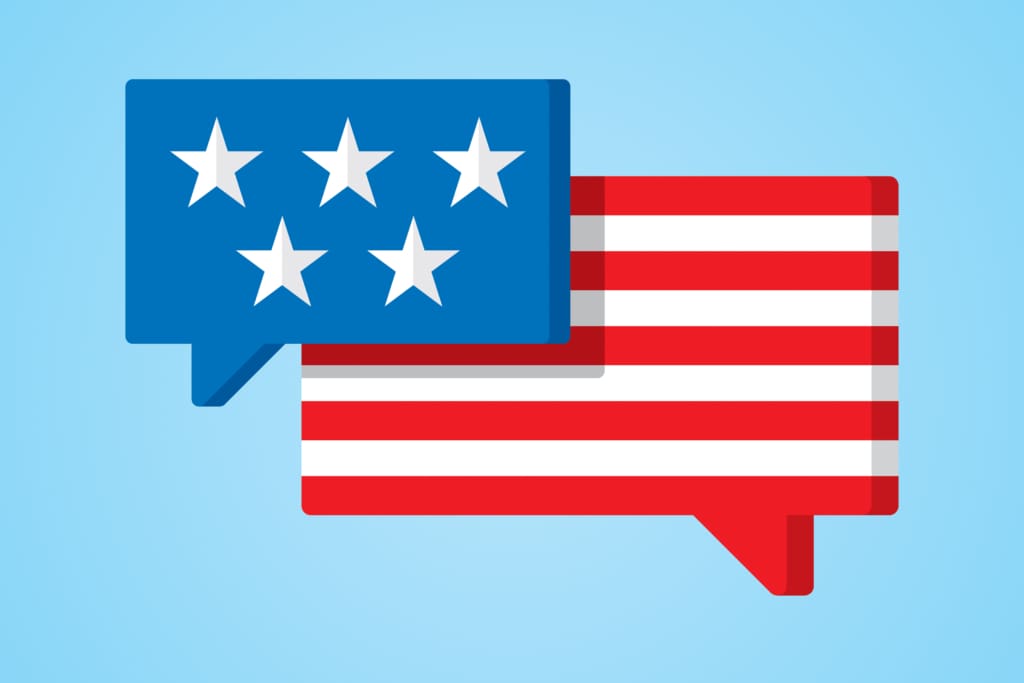Traditional and social media play a significant role in influencing and impacting the US electorate in various ways. Together, these two mediums shape the political landscape, informing, persuading and mobilizing voters.
Discover how we have been assessing the power of media, and how different mediums have impacted the US electorate in recent years.
Traditional Media
Traditional media has long served as the primary trusted source of information for voters. Newspapers provide in-depth reporting, analysis and investigative journalism focused on the candidates, the prevailing issues and related election events. Television networks host debates and provide candidates with a platform through interviews and town halls. Radio stations provide updates as events unfold.
The traditional media are also key platforms for political advertisements. The goal is to reach as broad an audience as possible and share the candidate and/or party key messages in an attempt to sway voter opinion.
The primary influence of traditional media is its ability to “set the agenda.” The public discussion is shaped by which stories are put forth and which topics receive the most coverage. This prioritization can be intentional or unintentional. Regardless, it has a direct impact on voter’s perceptions, priorities, and choices.
Although journalism is supposed to be objective and impartial, the reality is traditional media organizations want to make a profit. Sometimes the most engaging story is not always the most neutral. The choice of headlines, imagery, and language can introduce a level of bias that sways readers who ultimately vote.
Television, radio, newspapers, and magazines were the primary source of information for voters until social media came along. The persuasive power of traditional media remains strong, but it has massive competition in social media.
Social Media
Social media platforms like X (formally Twitter), Facebook, TikTok, and Instagram have emerged as powerful tools for fundraising, mobilizing individuals, and allowing the average person to have a platform to share their views. The democratization of information, misinformation and disinformation is available to anyone with a smartphone, computer, smart watch etc.
Social media’s most powerful feature is the ability to disseminate information rapidly, allowing users to share and amplify content and any related narratives. The viral aspect of social media can take a well-crafted message, video snippet or meme and garner a significant amount of attention, either positive or negative.
By leveraging social media, candidates can target their outreach by demographic, have a rapid response to counter misinformation, or bolster their position.
How do traditional and social media differ?
Unlike traditional media content, social content is prioritized via algorithms which create echo chambers. This is because they serve up content similar to what the user had recently and historically accessed. This along with user-generated content can help grass-roots movements become sizable in a fraction of the time it would have taken before social media’s popularity.
When compared to traditional media, social media allows users to challenge the traditional narrative and influence how traditional media responds. This dynamic, when overlayed on the political landscape will impact the voter’s perception of candidates, issues, and events. It can also shift the voter’s perspective from the narrative traditional media has presented.
The Data
As of 2022 there were 168.42M registered voters in the US. According to Pew Research, in 2020 the presidential election had the highest voter turnout of the 21st century with 66.8% of the eligible voting population casting a vote.
Nearly 90% of all Americans are active users of social media. It has become the primary medium to connect with others, engage with news content, and share information.
According to Pew Research “When asked which of these platforms they prefer to get news on, about half of Americans say they prefer a digital device (53%), compared to TV (33%). Even fewer Americans prefer radio (7%) or print (5%). These percentages have stayed mostly consistent since 2020.” Taking this one step further Pew Research states: “Among digital platforms, news websites or apps are also the most preferred source for news: About a quarter of U.S. adults (23%) prefer to get their news this way, compared with 13% who prefer social media, 12% who prefer search and 4% who say they prefer podcasts.”
Traditional and social media at the base level both disseminate information. Social media allows candidates to be in direct contact with the electorate without a journalist filtering their discussion. Traditional media on the other hand provides trusted, researched in-depth information and has the means to ‘set the agenda.’ Both mediums influence the electorate, each in its own way.
To gain a complete understanding of news trends and audience sentiment around the election check out our US Election Media Analysis Dashboard here.
For further insight into the tools we used to create this analysis, visit our Social Listening and Media Monitoring pages.
